AMD FSR is the building block for Apple's MetalFX upscaling tech — the app's legal info references the usage of AMD FSR
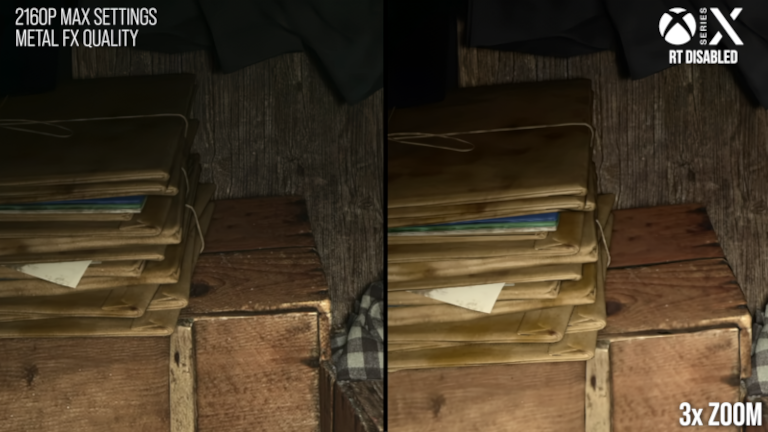
While Apple's MetalFX hybrid spatial/temporal upscaling solution was previously assumed to be developed in-house, closer scrutiny of the app's legal info by Notebookcheck.net has revealed the solution to be based on AMD's FidelityFX Super Resolution (FSR) technology.
This makes sense if you remember AMD announcing FSR as an open-source project compared to Nvidia's proprietary DLSS, which requires its Tensor cores to function. Apple was a little less forthcoming about MetalFX being built on top of FidelityFX, but this revelation bodes well for AMD, Apple, and gamers alike. For example, the recent open-sourcing of FSR 3 and its Frame Generation technology will likely make its way to Apple platforms, further improving their performance capabilities on Apple's silicon.
For those curious about how MetalFX looks in action, the best comparisons I've found so far stem from Digital Foundry and Andrew Tsai on YouTube. I'll post screenshots from these respective videos in the gallery below and discuss MetalFX and its future in more detail afterward.
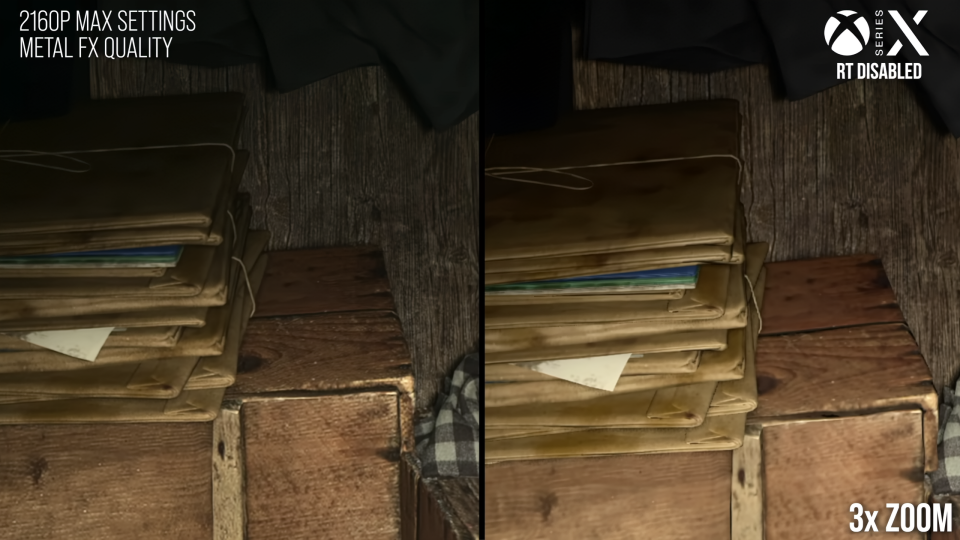
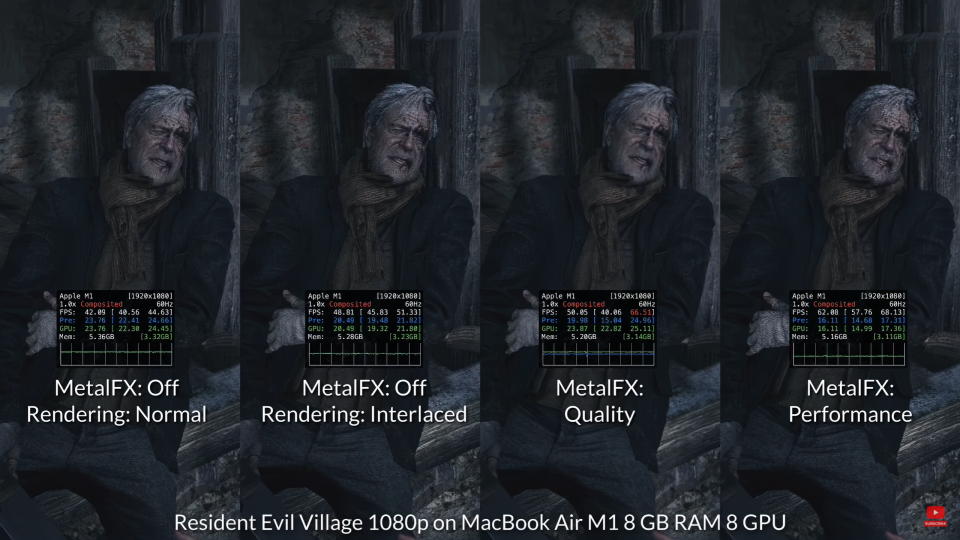
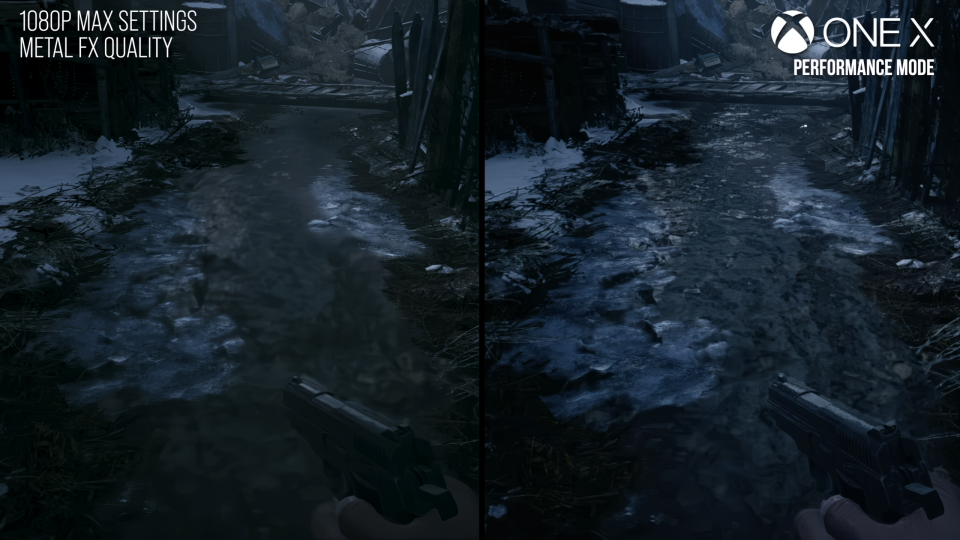
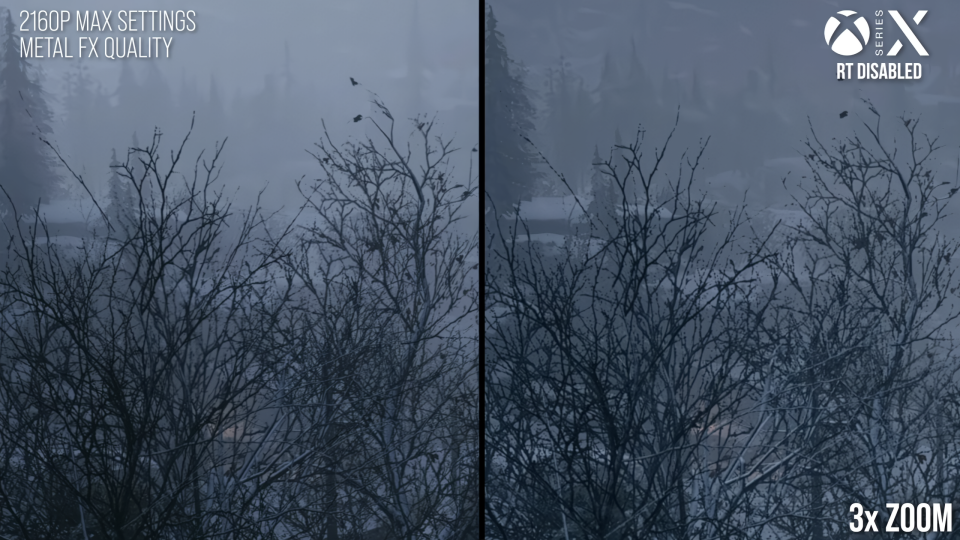
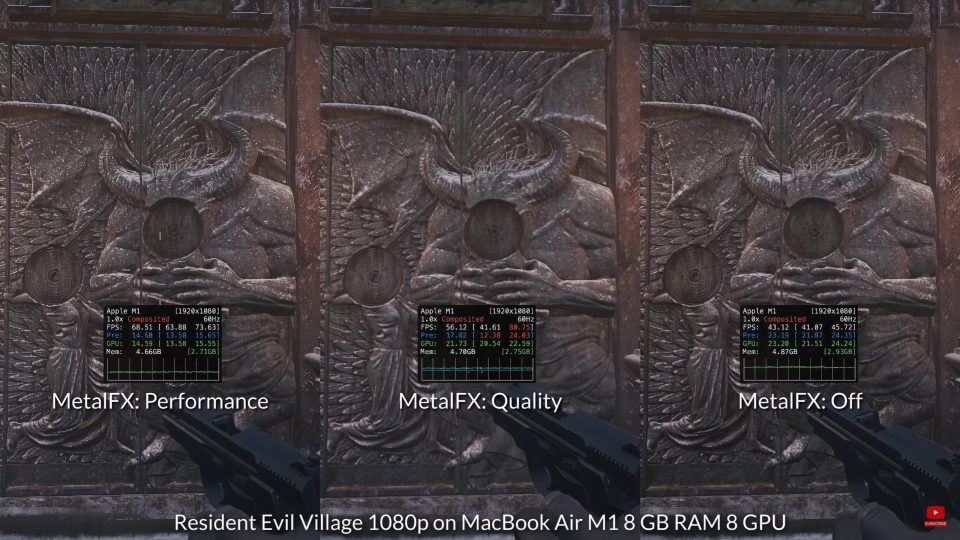
Apple's MetalFX seems to be a promising implementation of AMD FSR 2-era resolution upscaling. Without it, playable experiences with games like Resident Evil: Village and Death Stranding on Apple devices (including the iPhone 15 Pro) wouldn't be impossible. As-is, these games will still obviously be in a very compromised form on Apple's mobile hardware and laptops compared to their full-fat Mac computers.
If Apple can implement the now-open source Frame Generation from FSR 3 into MetalFX, this will also bode well for the future of its platforms in the gaming space. Apple certainly isn't getting less ambitious, considering recent releases like an Apple Arcade-exclusive Sonic game.
Fortunately for Apple, FSR 3's Frame Generation implementation is also starting to show some favorable comparison to DLSS 3 Frame Generation in Avatar: Frontiers of Pandora. This, plus Apple's MetalFX already being able to utilize onboard AI hardware acceleration, should help keep Apple's upscaling competitive, as long as they're serious about maintaining MetalFX.

